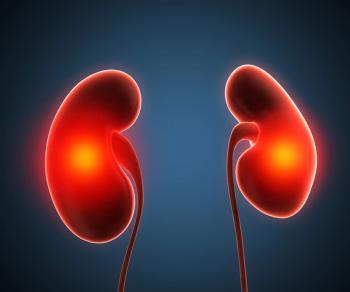
First-Line Ribociclib Combo Yields Significant OS Benefit Vs Fulvestrant in Postmenopausal HR+, HER2- Advanced Breast Cancer
Updated findings from the phase 3 MONALESSA-3 trial identified a significant overall survival benefit among postmenopausal patients with hormone receptor–positive, HER2-negative breast cancer who were treated with ribociclib and fulvestrant vs matched placebo.
Treatment with ribociclib (Kisqali) and fulvestrant (Faslodex) resulted in a significant overall survival (OS) benefit vs placebo/fulvestrant in postmenopausal patients with hormone receptor–positive, HER2-negative advanced or metastatic breast cancer, according to the updated findings of the phase 3 MONALEESA-3 trial (NCT02422615).1
Those treated with the combination were reported to have a median OS of 67.6 months compared with 51.8 months in the control group (HR, 0.67; 95% CI, 0.50-0.90). Additionally, the corresponding 5-year OS rates were 56.5% and 42.1%. After a median follow-up of 70.8 months, 16.5% and 8.6% of patients remained on treatment in each respective group.
“MONALEESA-3 results continue to demonstrate the survival benefit of treatment with ribociclib for postmenopausal women with advanced breast cancer,” Dennis J. Slamon, MD, director of clinical/translational research at the University of California, Los Angeles Jonsson Comprehensive Cancer Center, said in a press release.2 “Whether partnered with fulvestrant or an aromatase inhibitor in the first-line setting, ribociclib offers oncologists a CDK4/6 inhibitor with consistent benefit in providing women with [HR-positive/HER2-negative] advanced breast cancer more quality time, regardless of their disease characteristics.”
Patients were randomized 2:1 to either the ribociclib arm or placebo arm. Patients received either 600 mg of oral ribociclib on days 1 to 21 of every 28-day cycle or matched placebo plus 500 mg of fulvestrant every 28 days and an additional dose on day 15 of cycle 1.
Additional findings from the study indicated progression-free survival 2 (HR, 0.64) and chemotherapy-free survival (HR, 0.62) both favored the ribociclib arm compared with the placebo arm. In total, 81.8% and 89.7% of patients in the experimental and control arms who discontinued treatment, respectively, received a subsequent antineoplastic therapy. Additionally, 16.7% and 35.0% of patients in both groups, respectively, were given a subsequent CDK4/6 inhibitor. Findings in both the intent-to-treat and second-line populations were found to align with findings in a previous analysis.
“It is a tremendous achievement to see such remarkable, consistent overall survival results from the MONALEESA clinical trial program, demonstrating how Novartis is transforming care for people with breast cancer as we continue to work toward cures. The unique profile of Kisqali continues to be reinforced, with results from MONALEESA-3 pushing the boundaries of how using a Kisqali-combination treatment regimen can extend lives of postmenopausal women living with HR+/HER2- advanced breast cancer without compromising quality of life,” Jeff Legos, executive vice president and global head of the Oncology & Hematology Development at Novartis, concluded in the press release
Findings from the study were presented at the
References
- Cecala A, Neven P, Fasching PA, et al. Updated overall survival (OS) results from the first-line (1L) population in the phase III MONALEESA-3 trial of postmenopausal patients (pts) with HR+/HER2? advanced breast cancer (ABC) treated with ribociclib (RIB) + fulvestrant (FUL). Ann Oncol. 2022;33(suppl 3):S194-S223. doi:10.1016/annonc/annonc894
- New Novartis data demonstrate only Kisqali offers more life in the first-line setting for postmenopausal HR+/HER2- advanced breast cancer patients. News release. Novartis. May 4, 2022. Accessed May 4, 2022. https://bit.ly/3FdI1PY
Newsletter
Stay up to date on recent advances in the multidisciplinary approach to cancer.



















































































